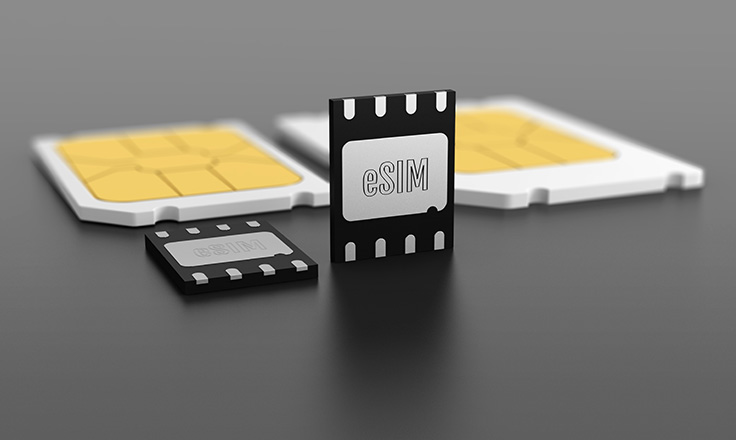Out with the Old: Telcos and Device Manufacturers are Turning Increasingly to eSIM Technology for Seamless Connectivity
- Published
- 5 min reading

Embedded SIM (eSIM) technology is gaining traction – which is great news for telcos and their consumer and enterprise clients.
What is an eSIM card and how does it work
Also known as eUICC (embedded universal circuit card) or virtual SIM, eSIMs replace standalone SIM cards, which certainly have their limitations. For example, the physical SIMs we are all used to lock users to a particular network. If you want to change, or to have your device connected to more than one network, you need a different SIM. Then there’s the question of compatibility. Does your device take standard, micro or nano?
By embracing eSIM technology, communication service providers (CSPs) and digital service providers (DSPs) are removing these barriers.
Embedded eSIM technology
Because eSIMs are embedded in a particular device, there is no need for the physical equivalent. The device can be connected to any network (or even more than one) by installing the appropriate eSIM profile. Then, it’s just a question of buying the service bundle that you require at any time – which means, for example, that users can shop around for the best data deals while travelling and don’t have to rely on public wi-fi networks that may not be particularly secure.
Smart communications with eSIM
From the enterprise client perspective, eSIMs will open up new markets and business models for telcos. That’s because operators will be able to combine them with the network slice capabilities of 5G’s lower battery consumption, broader bandwidth and lower latency in a way that looks likely to prove far more profitable than business models in the B2C sector.
The role of eSim in telecom business
From smart cars to wearables and Industry 4.0 (and everything in between) telcos will be able to leverage eSIMs to enter the B2B/enterprise sector in many verticals. This appears to be a clear route to 5G monetization for operators, and a means to accelerate the return on their investment in physical and virtual network upgrades.
Uptake of eSIMs across the telco industry – and indeed within the Internet of Things as a whole – is already growing, with GSMA noting a doubling in the number of eSIM-ready devices in 2020. What’s more, the pace is expected to accelerate in the very near future. By 2025, we could be seeing a third of all smartphone connections in the world being made via eSIM.
That’s good news for consumers, good news for telcos, and good news for business customers.












